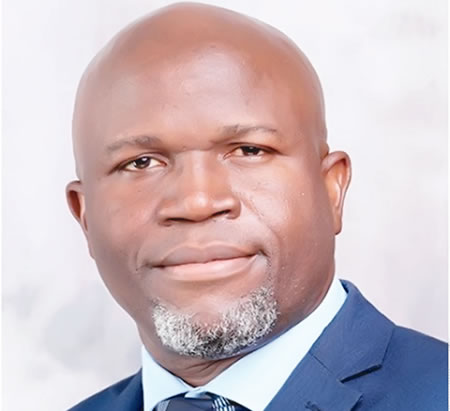
The Society for Family Health (SFH), a leading Nigerian non-governmental organisation (NGO), has said clarified that the Lafiyan Yara approach and theory is grounded on the premise that early detection of the human-immune virus (HIV) has the propensity to reduce infant, child and maternal mortality.
The managing director, SFH, Dr. Omokhudu Idogho made this clarification during a one-day dissemination meeting of the SFH Lafiyan Yara project achievements, best practices, results and findings yesterday (July 13, 2022), in Abuja.
Idogho said that to facilitate early detection of HIV, the organisation had noted that increased access to antenatal care (ANC) services by pregnant women and quality delivery services by health workers would enhance exposure to HTS and PMTCT services which, consequently eliminates new infections in babies.
“Similarly, improved linkages between informal and formal health structures in Taraba State amplify finding of new HIV positive cases, increase anti-retroviral uptake, increase the number of virally suppressed women and children living positively and invariably reduces mortality among target groups.
“A second outcome anticipates better health-seeking behaviours among direct and indirect beneficiaries when people are informed, motivated, equipped and have opportunities to seek HTS as a result of recognised benefits such as decreased mortality.
“While it is understood that the changes in behavioural practices rarely occur through linear mechanisms but are influenced by a range of other factors such as education, knowledge and wealth status, the programme noted that contact between caregivers, direct beneficiaries and health workers can lead to an increase in knowledge and motivation to adopt positive behaviours,” he explained.
He stated that when reinforced by influencers within the community or the home, beneficiaries and caregivers become increasingly motivated to adopt what they now see as socially acceptable HIV prevention and treatment.
In his remarks, the director-general, Taraba State AIDS Control Agency (TACA), Dr. Garuba Danjuma, said the state has an HIV prevalence of 2.9 per cent, the highest in the northeast geopolitical zone and the fourth highest in the country after Akwa Ibom, Benue and Rivers states.
Danjuma said that antenatal care attendance was 44.5 per cent, lower than the average for the northeast geopolitical zone of 62.4 per cent.
“The estimated proportion of the population that are pregnant women and children below 15 years old in the state is five per cent and 41 per cent, respectively.
“Drivers of the HIV epidemic include norms that promote multiple concurrent sexual partnerships, low-risk perceptions, low awareness of HIV and poor literacy rates.
“Also, the Family Life and Health Education (FLHE) impact evaluation study showed that the sexual debut for girls in the state is 12 years. This attributes to the high rate of teenage pregnancy in the state. Likewise, there is low awareness of mother-to-child transmission of HIV,” he explained.
He stated that, in recent times, the geopolitical zone has been ravaged by crisis. Consequently, the state has had to host a significant number of internally displaced persons (IDPs) from crisis-ridden states because of its relatively stable security situation. “There was limited or no donor-funded HIV interventions in Taraba when the Lafiyan Yara project started in the state. This left a gap in the continuum of care for HIV. The last intensive intervention for HIV was the Sure-P funds for scaling up the treatment of HIV/AIDS which ended in 2017.
“Consequently, there is a large number of undiagnosed people living with HIV (PLHIV) including children and pregnant women. In addition, a common maternal behaviour pattern in northern Nigeria is that women are more likely to visit traditional birth attendants (TBA) than orthodox health facilities for antenatal and postnatal care which hinders access to HTS among pregnant women,” he stated.
He added that gaps, therefore, exist in early infant diagnosis (EID) at the facility level because women do not visit health facilities for antenatal care attendance. “Furthermore, EID results take a long time to generate because only a few people access the services which require many samples to run.”
In her remarks, the head of National AIDS and STIs Control Programme (NASCP), Federal Ministry of Health (FMOH), Dr. Akudo Ikpeazu said that the country accounts for 24 per cent of pregnant women living with HIV worldwide who were not on antiretroviral therapy and is the largest contributor among the seven countries that account for half of all new HIV infections among children globally.
Ikpeazu said that one in every seven babies born with HIV in the world is a Nigerian baby and the government is doing everything possible to change the narrative.
Similarly, the programme manager, SFH, Mrs. Aisha Dadi, pointed out that the broad objective of the project is to ensure pregnant women, lactating mothers and children have access to quality HIV services and good quality of life.
Dadi said Lafiyan Yara uses patent and proprietary medicine vendors (PPMV), traditional birth attendants (TBA) and village health workers (VHW) to identify, refer, link and track beneficiary populations to health facilities where provider-initiated testing and counselling (PITC) would be delivered by trained and supervised health providers.
“Also, although intervention in the Lafiyan Yara project was carried out in eight LGAs, the baseline assessment was conducted in four intervention LGAs – Jalingo, Zing, Bali, Gashaka and Lau (a control LGA),” she maintained.
In his remarks, the Research Fellow and consultant public health physician, Institute of Public Health, Obafemi Awolowo University, Dr. Olujide Arije said: “The study participants were women who were delivered of a child in the past 12 months preceding study assessment [period]. For each study LGA a minimum sample size of 430 was estimated.”
Arije said that the novel project was an implementation science: using existing community structures in promoting active HIV case-finding among children less than 15 years and pregnant women.
Dadi said the project commenced in May 2019 and since its inception, the project team has been working assiduously with national and state actors including, NASCP, the National Agency for Control of AIDS (NACA) and TACA to achieve the programme deliverables in line with set objectives and performance indicators

